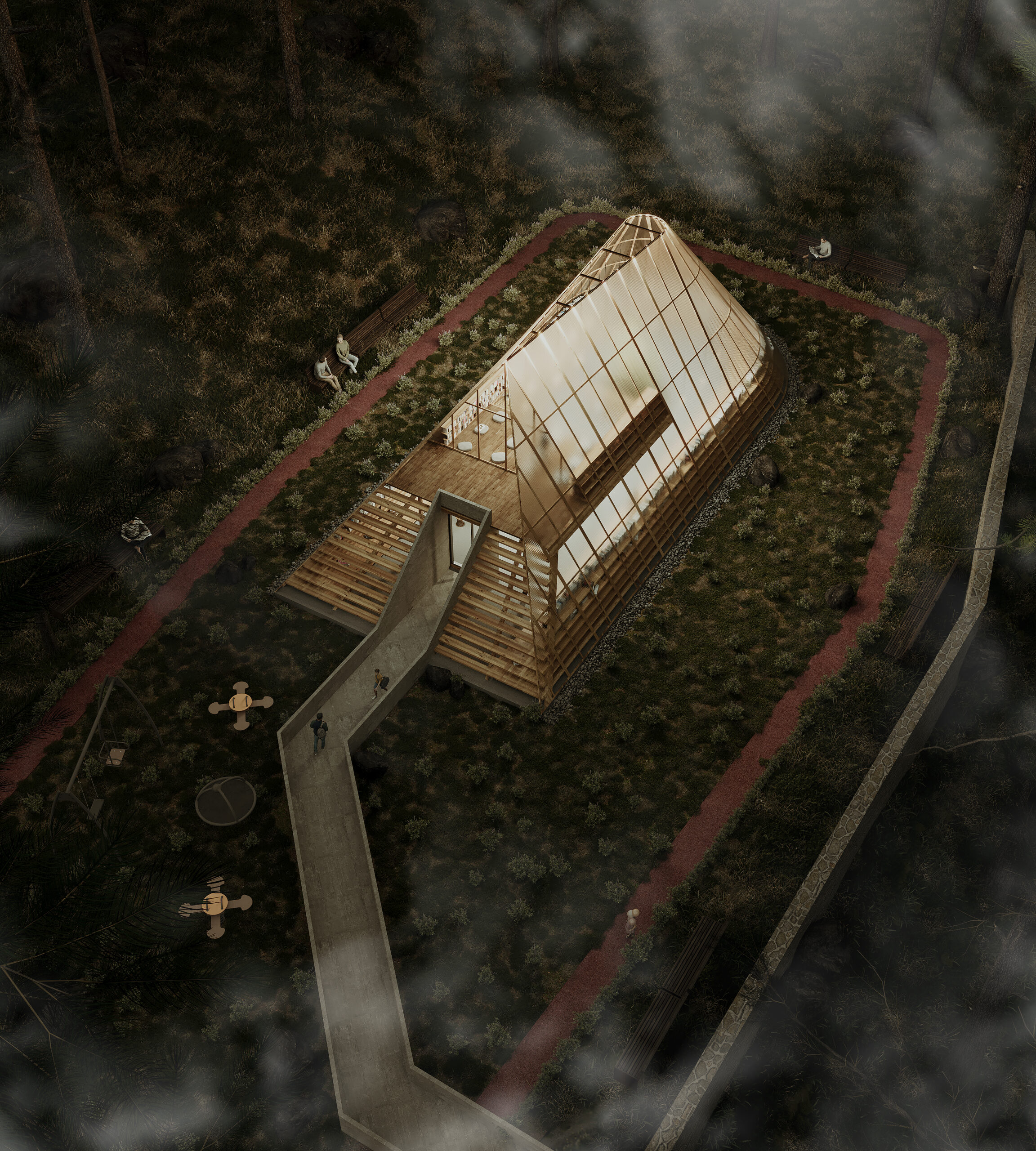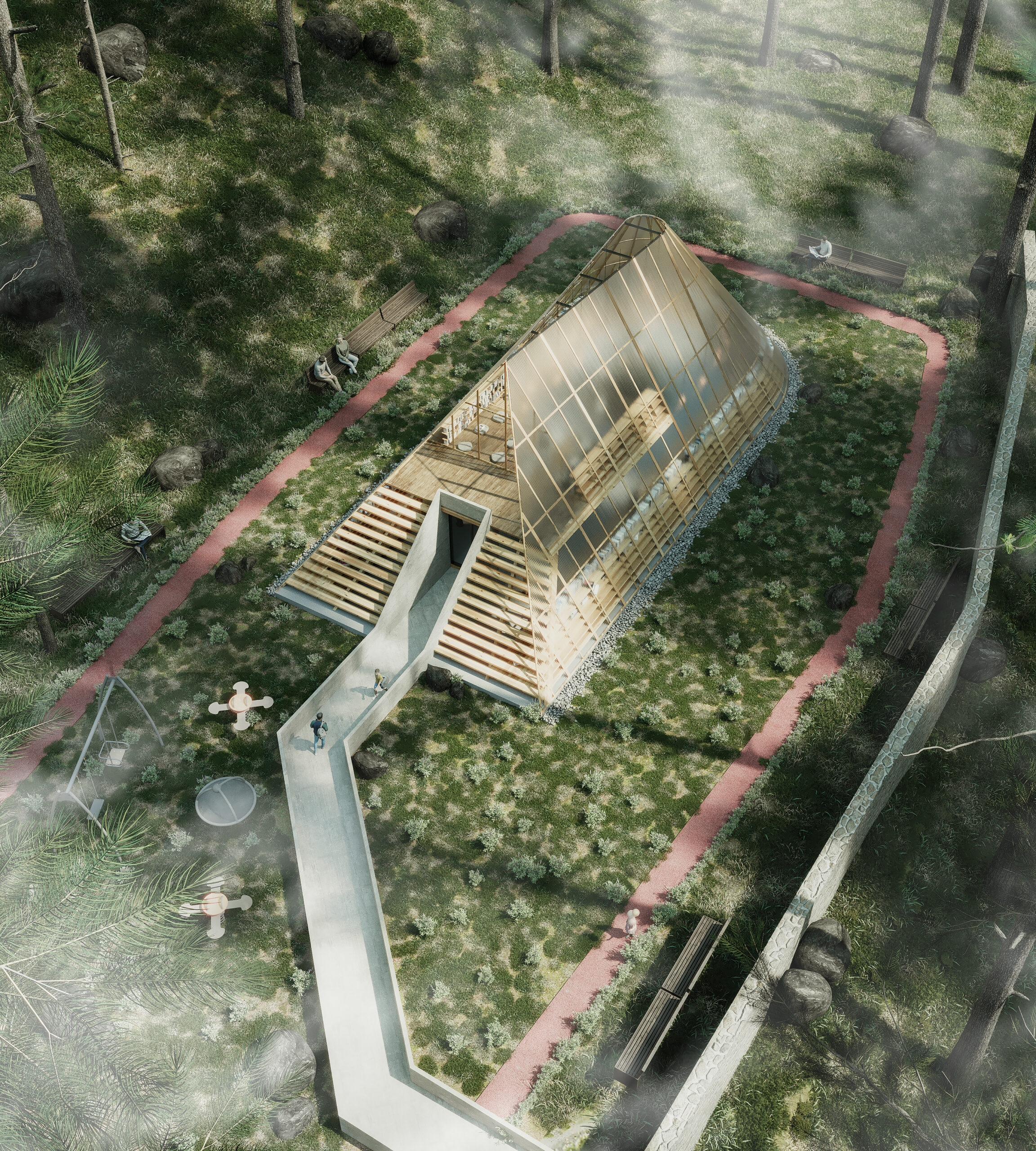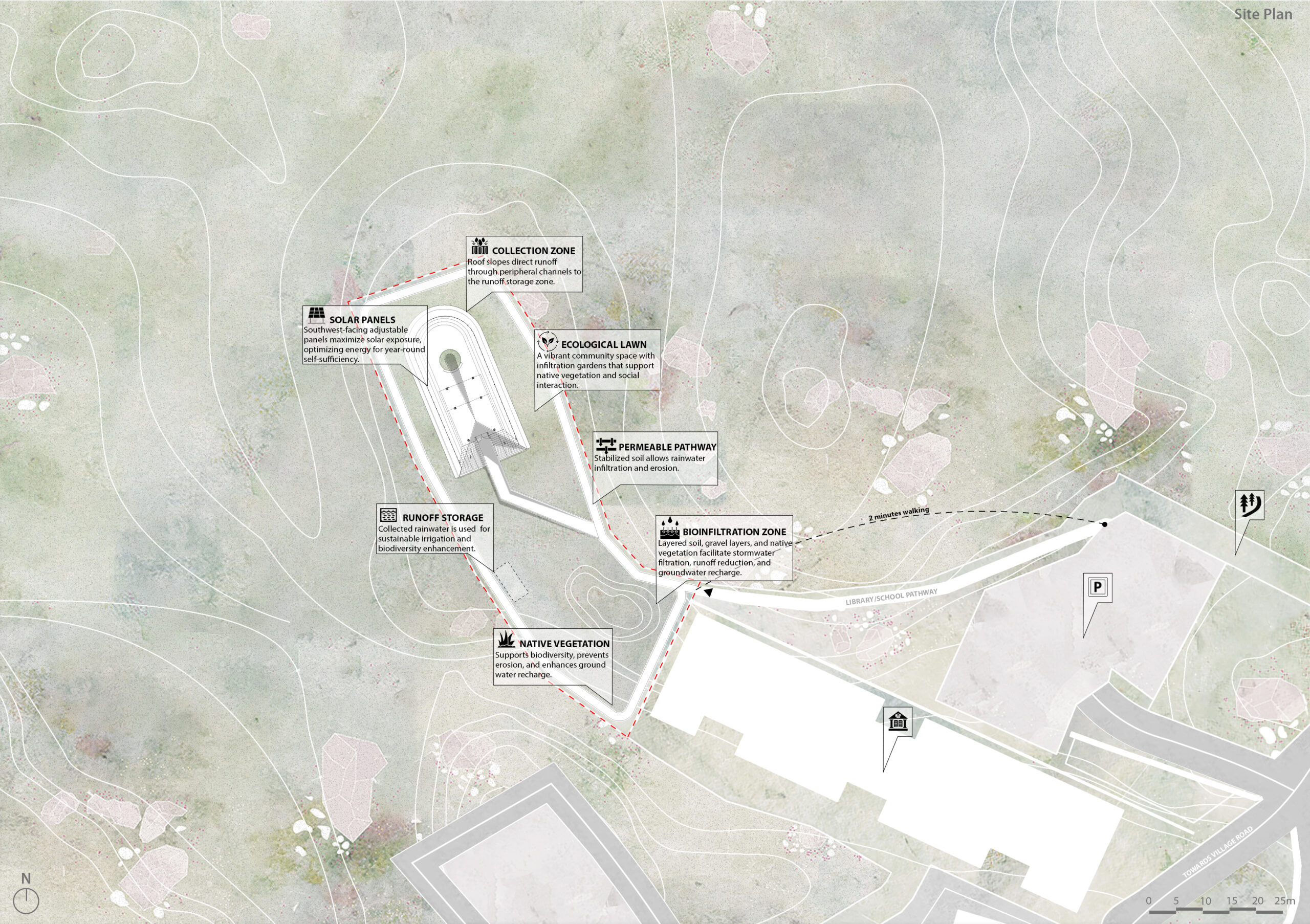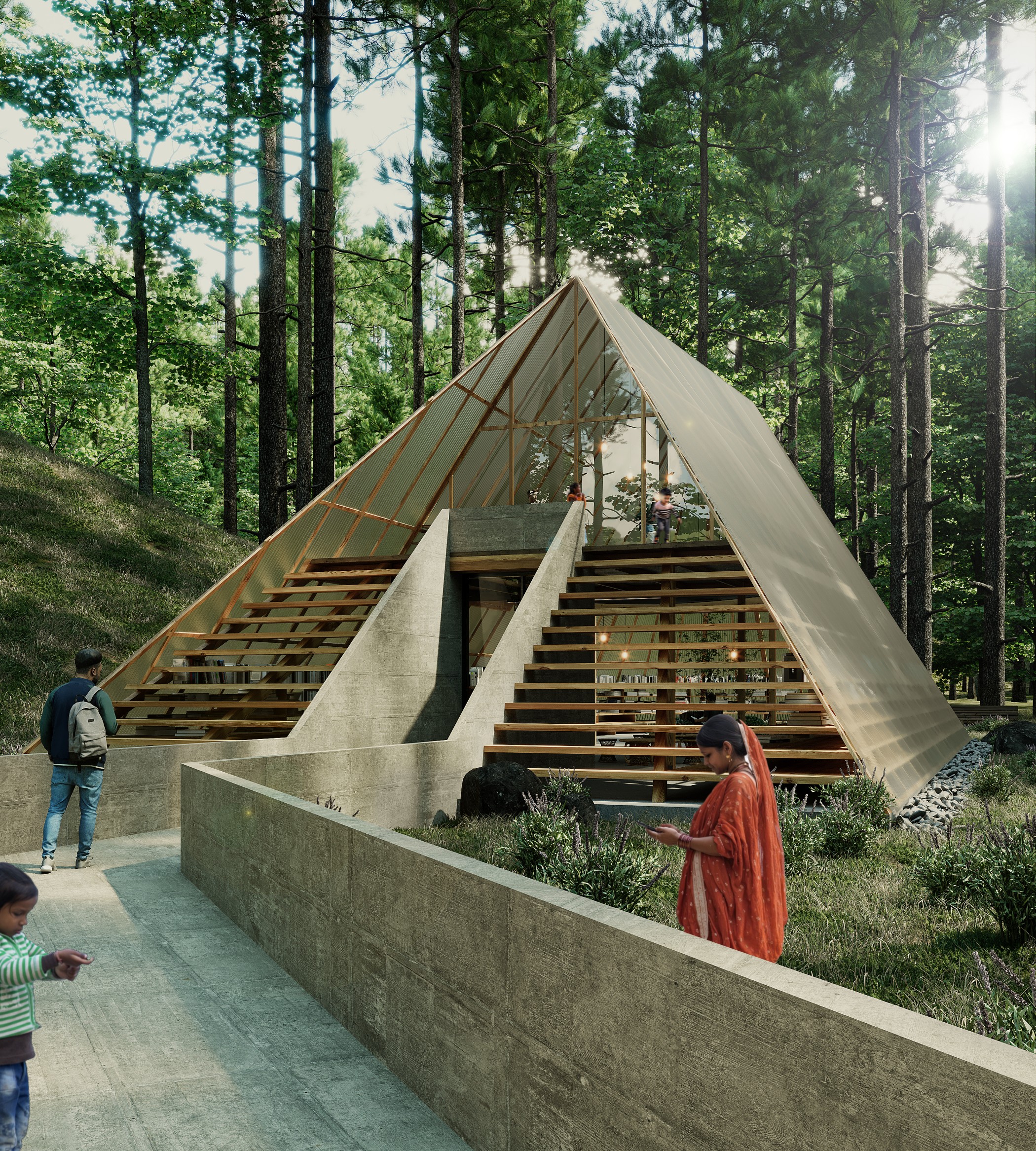Tirchakhet Community Library
Rooted in ecological sensitivity, the Tirchakhet Community Library reimagines public architecture as a living system-resilient, adaptive, and deeply integrated with its Himalayan context. Drawing from local A-frame vernacular forms, the design combines recycled polycarbonate, pine wood, and reused concrete in a spatial choreography that embraces light, warmth, and circulation. Passive heating, rainwater harvesting, and solar-powered systems reduce dependence on mechanical infrastructure. The library’s architecture dissolves into the surrounding landscape through permeable walkways, green pockets, and bioinfiltration zones, creating a dynamic interplay between structure and nature-a quiet yet powerful call for regenerative design.
Location
Nainital, Uttarakhand
Status
In-progress
Themes
Architecture, Sustainability, Cultural, Educational, Library
Design Philosophy
The library’s design is informed by place, people, and planet. Each zone
nurtures a specific community function: ‘The Exchange’ sparks cultural
dialogue, ‘The Forum’ encourages collective learning, while ‘The Net Loft’
offers refuge for solitary reading. Grounded in local materials and
constructed with community input, the library honors indigenous wisdom and
craftsmanship. It embodies a porous architecture-where inside and outside,
built and grown, meet fluidly. Passive strategies, biodiversity integration, and
vernacular reinterpretation converge to express a holistic vision: one where
architecture becomes a vessel for ecological stewardship and communal
care.
Design Features
RiStudio unfolds as a fluid composition of curved forms and calming tones,
where architecture and ambiance merge seamlessly. The rippled metal
ceiling becomes a signature element, reflecting soft, diffused light throughout
the space. Built-in niches, sculpted seating, and recessed lighting articulate
function with elegance.
Rainwater harvesting merges with bioinfiltration landscapes, allowing groundwater recharge and biodiversity restoration. The use of pine wood and repurposed elements reflect local craft, while flexible spatial layouts support diverse use cases-from quiet contemplation to spirited gatherings-anchoring the library in community and ecology.






